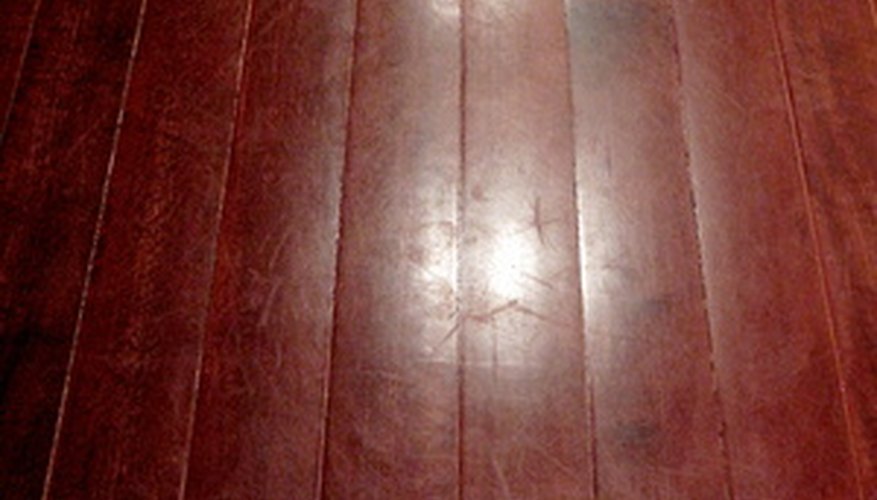You can paint your varnished wood white as long as you understand the proper preparation procedures, critical to promoting a lasting finish. Varnish is a protective, glossy coating that helps make wood resistant to moisture damage and abrasion scars. Unfortunately, it also leaves the wood ill-suited for paint adhesion. You must eliminate this topcoat, prior to painting, or you will end up with significant shedding. Even after you've removed the varnish, the wood will not be ready to paint. You must apply a particular type of base primer, based on the location of the wood surface.
- You can paint your varnished wood white as long as you understand the proper preparation procedures, critical to promoting a lasting finish.
- Even after you've removed the varnish, the wood will not be ready to paint.
Eliminate the varnish topcoat, using a power sander, stocked with 180-grit sandpaper. Sand along with the wood grain until the surface appears dull.
Remove sawdust that would inhibit adhesion by wiping the wood with tack cloths.
Coat interior wood with white latex primer, using a paintbrush, engineered for use with water-based coatings. Use acrylic latex primer on exterior wood. Wait two hours for the primer to dry.
- Remove sawdust that would inhibit adhesion by wiping the wood with tack cloths.
- Coat interior wood with white latex primer, using a paintbrush, engineered for use with water-based coatings.
Wash the brush with water.
Coat interior wood with white latex paint, using a paintbrush, engineered for use with water-based coatings. Use acrylic latex paint on exterior wood. Wait two hours for the paint to dry. Add another coat if the primer bleeds through.
WARNING
Use white gloss acrylic latex paint on doors. Use white acrylic floor paint on wood floors. Do not prime or paint directly over varnished wood, or the finish will peel. Never apply paint directly over unprimed wood, or the finish will flake. Don't use a tinted primer if you are using white paint, or you will have bleed-through.
